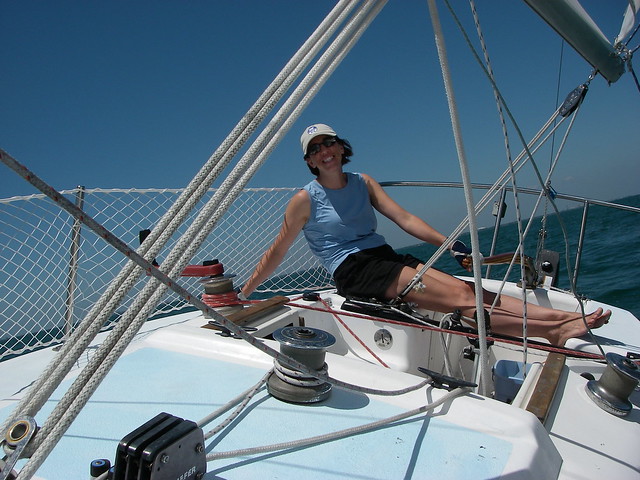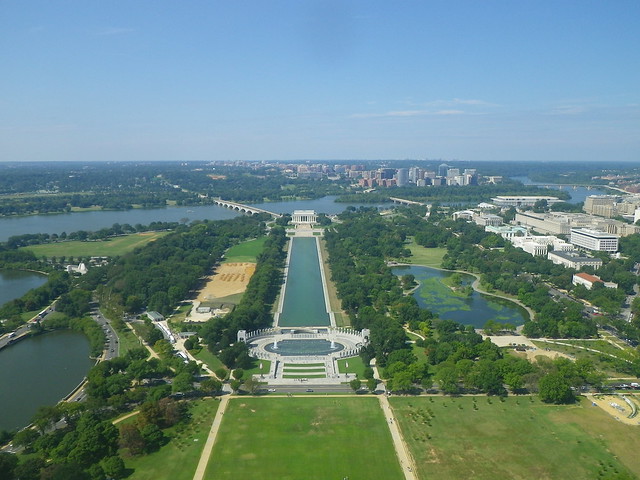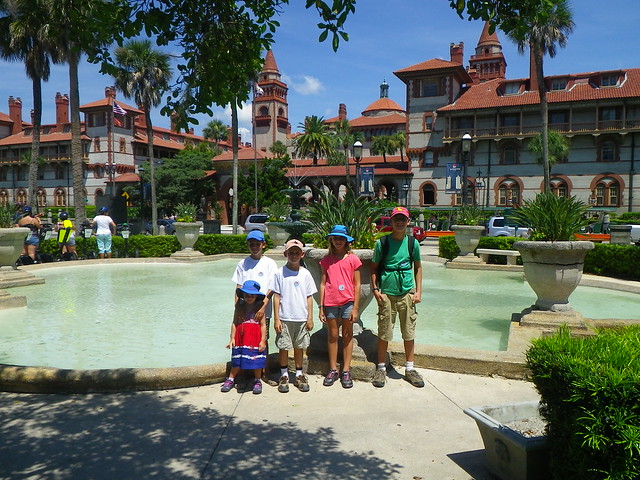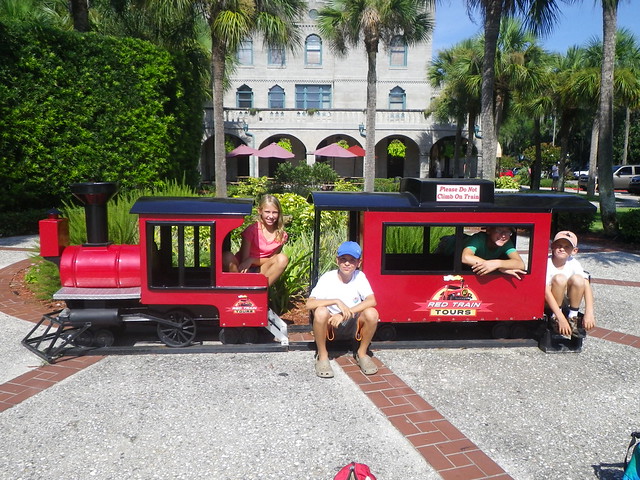Making a passage is like hitting the “pause” button on my life. It’s very hard to write in my Day-Timer: “sit in the cockpit and do nothing.” But sometimes that’s really what I should do. Feel the sun on my face, the wind in my hair, the weight of a child on my lap. Relax the rules that keep me sane during my quotidian life because this is not my quotidian life. Even rough passages, which are not very pleasant, have a way of making one sit still and appreciate life (large waves will do that). Overnight passages have the feel of a holiday—a holiday that you dread and anticipate at the same time. The passage we just made from Ft. Pierce to Biscayne Bay was in many ways typical of our other overnight passages. Here’s a peek into our life afloat:
9 AM A friend from the Keys texts us (again) wondering where we are and why we’re freezing our butts off in Ft. Pierce instead of heading south to hang out with them.
10 AM I abandon the attempt to make a big Sunday breakfast and feed everyone granola instead as Jay and I discuss using the weather window to head south.
11 AM Having decided to “just do it” we figure out what’s on the short list to prepare for departure. I will head to the library to drop off books, to a friend’s house to say good-bye and drop something off from my kids to hers and to the store for last-minute provisions. Jay will prep the boat for travel.
3 PM Hours later, I return with said provisions and we eat a late lunch, unpack groceries and run the engines.
4 PM We get fuel and water and do a pump-out at the marina. This always takes longer than we think it will. Debate ensues about whether we should go now or have a burger at the marina restaurant and wait until morning. We decide to use inertia and just go (“a boat tied to a dock stays tied to a dock; a boat in motion stays in motion). Good friends come down to see us off; it’s so nice to have someone to wave to (though we'll miss them before we're even out of the marina).
5 PM We head out the Ft. Pierce inlet, not into, but away from, a beautiful sunset. We make no commitments to really go until we see how the inlet looks. A blessing: the tide is running out and the seas are calm, the winds fair. We head south, hugging the coast to stay out of the north-flowing Gulf-Stream. We say a prayer of thanks and ask for safe travel. Then we toss Oreos into the sea and say, “May these be the last cookies we toss on this voyage!” (See previous post “Traveling Traditions.”)
6 PM We hang out in the cockpit and do nothing. Rachel falls asleep in my lap.
7 PM I make a quick dinner of tomato soup, goldfish crackers and applesauce and set up the kids’ traditional passage movie: The Swiss Family Robinson.
8 PM The wind is out of the southwest, but we can close-haul. We unfurl the jib and boost our speed, motor-sailing at about 6 knots. At this rate, we will not reach the entrance to Hawke Channel for 14 hours. A long, but calm trip. More wind would mean a quick trip, but also rougher waters. No one tosses cookies—YAY!
9 PM Moonrise: a beautiful orange pumpkin-shaped waning gibbous, perfect for a night sail. Jay plans our course and plots waypoints for Larry and Otto (a.k.a. Lowrance chart-plotter and autopilot) and heads to bed to get some sleep. I make a pot of coffee and get ready for my night watch. Kids eat Christmas candy and finish their movie. Rachel goes to her cabin, and the older boys head to theirs. Sam opts to sleep in the salon, and Sarah insists on bundling up and sleeping in the cockpit. No rules on passages.
10 PM Motor-sailing. I’m the only one up, enjoying my coffee, my snacks, my book and my choice of music. My favorite part of passage-making, even with the fluky wind (sheet in, ease out, furl, unfurl) and the nerve-wracking lights—is that a sailboat? A big ship? A beacon? No, an incoming airplane. It keeps me awake.
2 AM Jay comes upstairs to investigate the flapping sound (me furling the jib). He makes us roast beef sandwiches. I make a cup of hot cocoa and go back to the “hot seat.” Jay goes back to bed for another hour. (Long night watches mean we feel more rested the next day. We used to do three hours on/three hours off, but it leaves us feeling ragged, especially if we have multiple days at sea. We now do six-on/six-off at night and take turns napping during the day.)
3 AM Jay comes on watch and I go down below for some much-needed sleep. I was beginning to nod off in the captain’s chair despite the cold wind in my face. I set snooze alarms for myself at this time of night so that I will look up every 10 minutes in case I’m reading with my eyes closed.
7 AM Snuggle-time with Rachel. She informs me that the waves are not scary. They are just rocking her gently.
8 AM I get up and make a pot of tea and instant oatmeal for anyone who wants something quick and warm. We sit in the cockpit and do nothing. We’re approaching shipping channels at Port Everglades so we’re keeping a close watch.
9 AM Jay goes down below to nap. Everyone else reads or does nothing. Aaron, Sarah, and Sam split sunflower seeds and spit shells overboard, a favorite activity while sailing. Cleaning up sunflower seed shells off the side of the boat is a not-so-favorite activity when we get where we’re going.
10 AM Eli takes a watch so I can go make egg-and-ham-and-cheese sandwiches for hungry people.
11 AM Jay comes upstairs to eat something and take the wheel. We pass Port-of-Miami uneventfully. We sit in the cockpit and eat animal crackers. I notice Rachel yawning so we go down in my cabin and read books until we fall asleep.
12 PM The kids play electric guitar (Rocksmith).
1 PM I come upstairs with Rachel to make some lunch. The kids are still playing the guitar. We’re sailing along nicely, and thinking of heading into Biscayne Bay since we don’t motor in Hawk's Channel at night (too many crab pots). I make a snacky-lunch of hummus and veggies, olives, apples and peanut butter, and tortilla chips and crackers for dipping. Everyone loves this kind of lunch, and we only eat like this on a passage.
2 PM We motor into Biscayne Bay and play Farkle in the cockpit (a dice game to which the crew of Sea Hunt IV introduced us last year—thanks!).
3 PM Still motoring and doing nothing. We pass stilt houses and see people canoeing and paddle-boarding. Kids play guitar again. I play a memory/matching game with Rachel.
4 PM I make the kids put down the guitar and they play LEGOs on the dining table instead while I go out on the foredeck for some late-afternoon yoga. I discover that while I cannot do “Tree Pose” on land, I manage to balance on one foot without wobbling on the deck of a moving boat. Hmmm.
5 PM We pick a place to anchor for the night and I start dinner. The kids fish off the back of the boat.
6 PM The sun sets a fiery orange and we open a bottle of wine. We eat a dinner of pasta carbonara, broccoli, and garlic bread. Everyone is in a good mood, laughing and talking.
7 PM We look at The Stars book (by H.A. Rey) and I come up with a star-gazing challenge: who can find the Great Hexagon of bright stars in the Eastern sky? (The stars are Sirius in the constellation Canis Major, Procyon in Canis Minor, Pollux in Gemini, Capella in Auriga, Aldebaran in Taurus, and Rigel in Orion.) We find it, but cannot see the Milky Way because of light pollution from Miami.
8 PM I read Wind in the Willows aloud and then the kids go to bed.
9 PM I do dishes and head to bed for a peaceful night’s sleep on the calm waters of quiet Biscayne Bay. The rest of the trip falls into the "Island Hopping" category, so the long part is over.




















